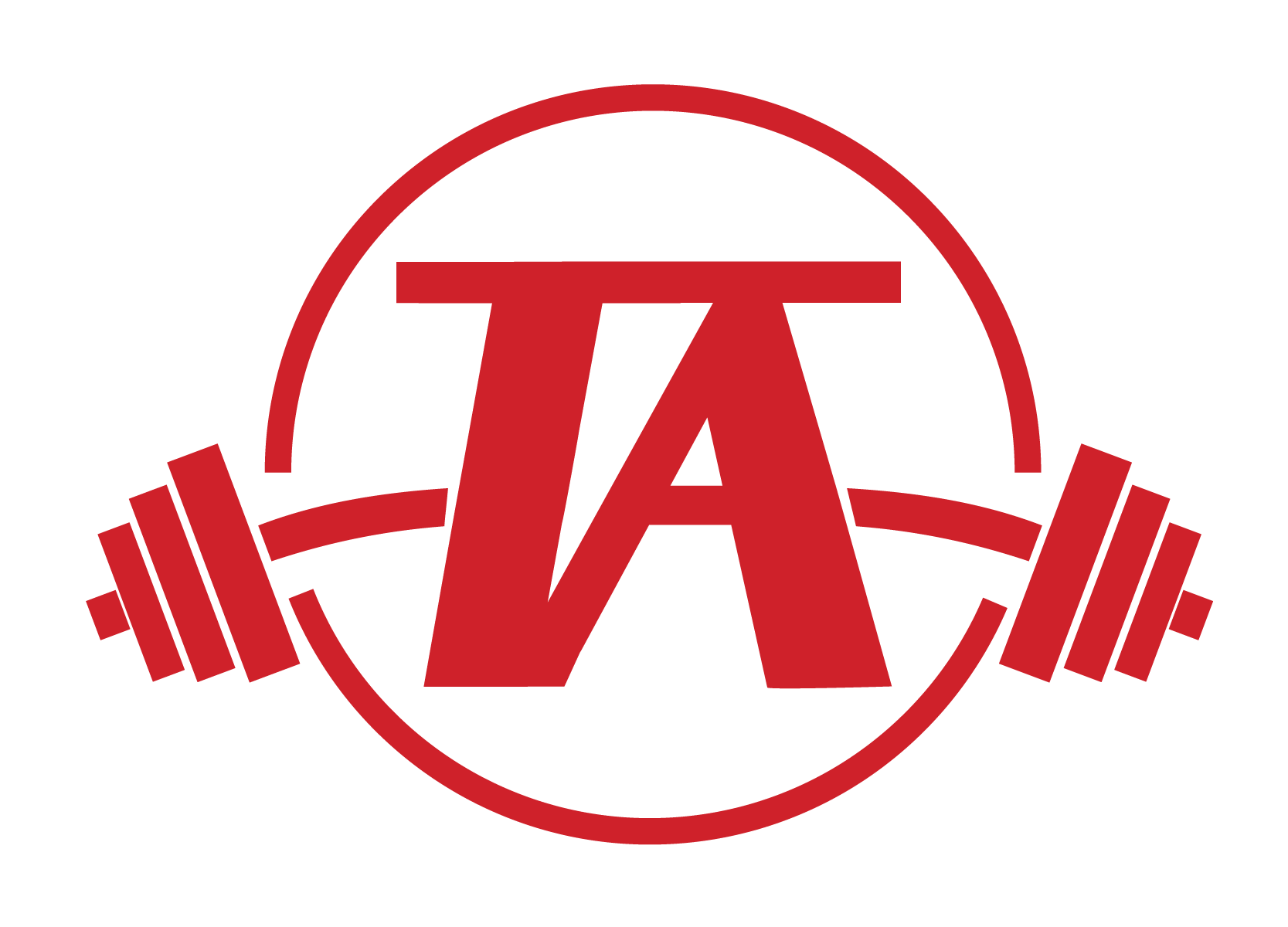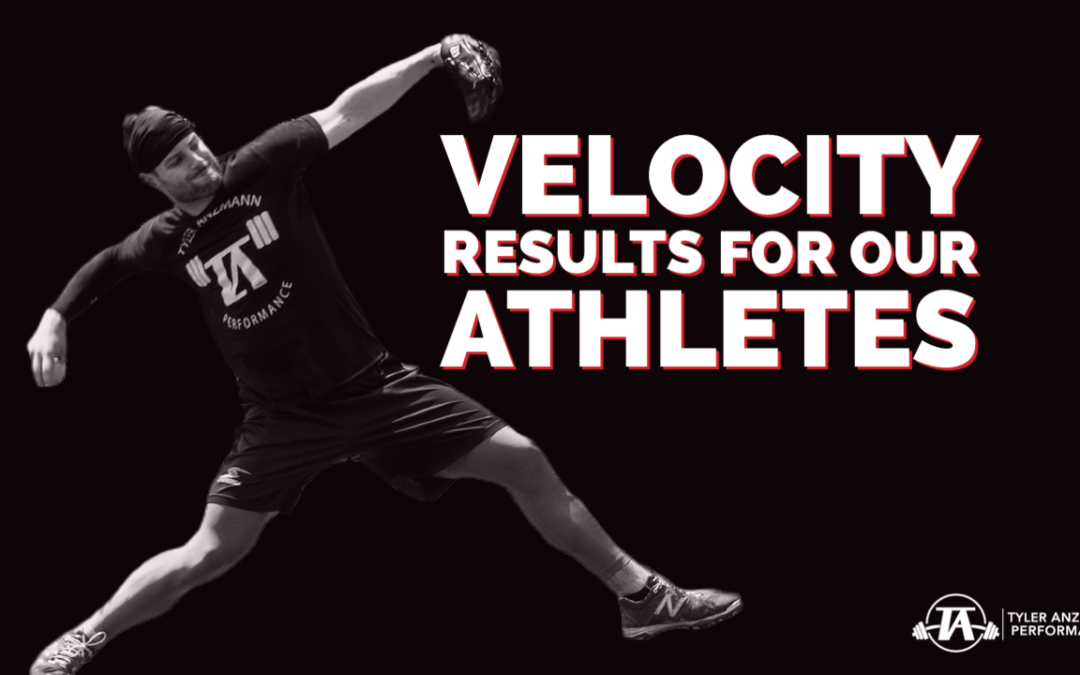Pitching is a complex task that requires an array of skills and abilities, with velocity being an important one.
Velocity is like an SAT score for your college applications – a high one doesn’t guarantee you’ll get in everywhere, but a low one severely limits your options. The World Series is putting the level of velocity on full display with starters and relievers for both teams showing off high 90’s and triple digit fastballs.
The need to improve velocity is one of the reasons athletes have sought out Tyler Anzmann Performance. Utilizing a detailed assessment process and individualized programming we’ve helped hundreds of athletes do just that.
Assessment Process
The assessment gives us our initial training profile for an athlete. We assess passive and active range of motion (ROM), basic movement pattern competency (can they squat, hinge, etc.), perform a detailed mechanical analysis using 4 angles of slow-motion video, and perform a force-velocity profile.
The movement and mobility assessments allow us to see where athletes fall outside an acceptable bandwidth for ROM based on our in-house data and data from ASMI and others. Based on their deficiencies, we can implement programming strategies to restore and improve ROM in restricted joints. For example, ASMI has shown that horizontal abduction around 30 degrees is where many hard throwers will be (ASMI). If an athlete is restricted and falls outside of this range we may use tools such as use self-myofascial release strategies, end range isometric holds, and loaded movements through these ranges in order to improve an athlete’s ability to move well through this ROM.
The mechanical analysis process allows us to take an in-depth look at the pitching delivery and identify where an athlete can improve their movement and potentially increase velocity. Once we’ve identified our one or two big rocks for an athlete, we’ll design their throwing program with specific feel and drill work to help reorganize their throwing pattern. Along with this we consider their competition timeline and build out their throwing load progressions to ensure we provide enough stimulation for the adaptation we’d like (velocity improvements) along with ensuring that they are ready when their tryout or competition occurs.
The force-velocity profile gives us a detailed look at where an athlete’s strengths and weaknesses lie and how we can improve their deficient areas. In some cases, such as with our younger athletes who have not yet met our basic strength standards, the FV profile does not drive our programming decisions in a meaningful way. These athletes simply need to train consistently and improve their strength. But, for our advanced athletes, we can see whether they need to train more at high velocities or with heavier loads, how well they store and utilize elastic energy. In addition, our test-retest method allows us to constantly evaluate and adjust our programming.
Velocity Improvements
Now, let’s take a look at our data from our recent in-house and remote athletes and see how they’ve fared.
| Athlete | Baseline Velocity | Current Velocity | Remote or In-House | Training Time | Velocity Change |
| 1 | 80 | 88 | Remote | 5 months | +8 |
| 2 | 73.1 | 77.1 | In-House | 2 months | +4 |
| 3 | 86 | 88 | Remote | 3 months | +2 |
| 4 | 86 | 95 | Remote | 1 year | +9 |
| 5 | 78 | 82 | Remote | 4 months | +4 |
| 6 | 74.6 | 81 | In-House | 2 months | +6.4 |
| 7 | 76.6 | 79 | In-House | 1 month | +2.4 |
| 8 | 69.6 | 81 | In-House/Remote | 6 months | +11.4 |
| 9 | 71.6 | 75.3 | In-House | 2 months | +3.7 |
| 10 | 86 | 92 | Remote | 1 year | +6 |
| 11 | 83 | 91 | Remote | 1 year | +8 |
| 12 | 91 | 94 | Remote | 6 months | +3 |
| 13 | 86 | 93 | Remote | 1 year | +7 |
| 14 | 72 | 75.1 | In-House | 6 months | +3.1 |
| 15 | 87 | 91 | Remote | 2 months | +4 |
| 16 | 90 | 94 | Remote | 4 months | +4 |
| 17 | 76 | 83.4 | In-House | 6 months | +7.4 |
| 18 | 74 | 84 | In-House | 1 year | +10 |
| 19 | 81 | 84 | In-House/Remote | 3 months | +3 |
| 20 | 87 | 91 | In-House | 4 months | +4 |
| 21 | 74 | 87 | In-House | 1 year | +13 |
| 22 | 74 | 83.2 | In-House | 6 months | +9.2 |
| 23 | 82 | 86.1 | In-House | 3 months | +4.1 |
| 24 | 72 | 84 | Remote | 8 months | +12 |
| 25 | 78 | 82 | Remote | 6 months | +4 |
| 26 | 75 | 83.4 | In-House | 1 year | +8.4 |
| 27 | 72 | 79 | Remote | 5 months | +7 |
| 28 | 76.9 | 82.1 | In-House | 2 months | +5.2 |
| 29 | 87 | 93 | Remote | 1 year | +6 |
| 30 | 65 | 75.1 | In-House | 1 year | +10.1 |
| 31 | 70 | 78.6 | In-House | 5 months | +8.6 |
| 32 | 87 | 90.9 | In-House | 2 months | +3.9 |
A few interesting notes:
- Average improvement of all athletes was: 6.3 mph
- Some of our in-house athletes made very impressive gains even in-season (with various sports) for their whole training period
- A few of the big gainers trained as little as two times per week
- It seems obvious, but is worth noting that the guys who started at lower velocities tended to gain more velocity than their harder throwing counterparts
- Athletes who train for longer tend to gain more velocity – kind of a no-brainer
- In a future installment, we’ll take a look at how our improvements on the strength and conditioning side correlate with throwing velocity and what seems to be most important
Conclusion
While velocity is not the only factor that determines success on the mound, it does open a lot of doors and is a rising tide that lifts all ships. We do focus on other elements of pitching as well, such as command and pitch design, but those are beyond the scope of this article.
If you’re interested in training with us remotely or in our facility, contact us and let’s set up a time to discuss your needs.

